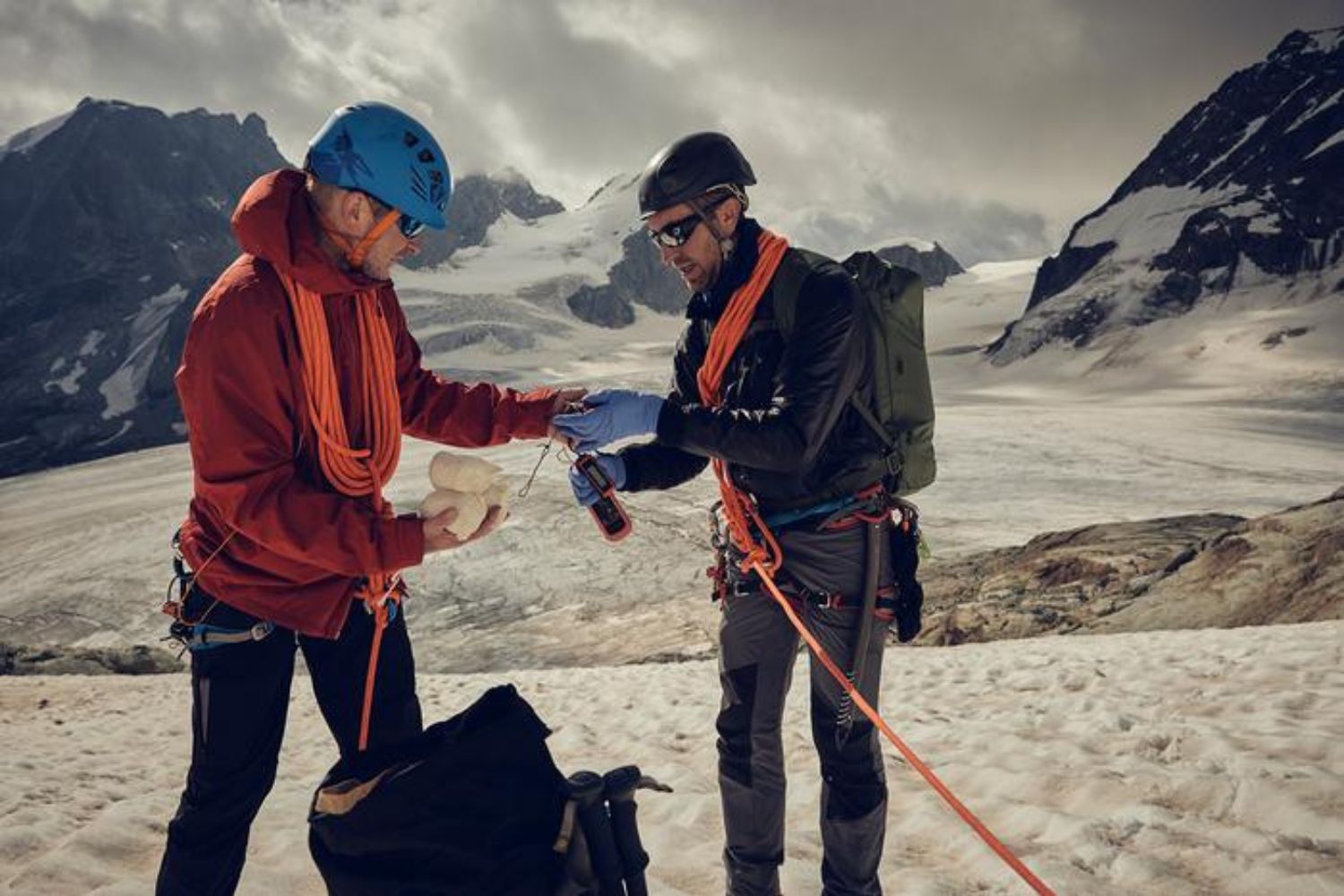Nanoplastics, microscopic particles of plastic, have been detected on Alpine glaciers thanks to a collaboration between UFZ researchers and mountaineers. The study highlights the risks to human health and the environment, and possible sources of contamination

@Zoe Sale
These minute pieces of plastic, created due to degradation of bulk plastic waste, have been discovered on Alpine glaciers by an international team of scientists from UFZ (Helmholtz Center for Environmental Research) and a mountaineer team.
Nanoplastics are hazardous to the environment as well as human health since after ingestion or inhalation, they find their way into the bloodstream and organs.
“Nanoplastics are especially worrying because, unlike microplastics, they are not filtered,” said lead researcher Dušan Materić.
Expedition to high altitude
Snow and ice sampling at high altitudes is a sensitive and risky process. That is why UFZ researchers joined forces with a experienced team of mountaineers who took the historic High Level Route from Chamonix to Zermatt, taking samples at 14 distant points along the route.
“For researchers, access to such areas is generally too complex and too risky,” said the study’s lead author, Leonie Jurkschat.
From tires to the Atlantic: the source of nanoplastics
Analysis of the samples revealed the presence of various nanoplastics such as polyethylene (PE), polystyrene (PS), and polyethylene terephthalate (PET), which were primarily found to have their origin in tire wear and the ocean.
“There is a lot of macro and microplastic in the ocean,” Materić explained. “This breaks down into nanoplastics, which are agitated by waves and bubble bursts, and find their way into the atmosphere.” To everyone’s surprise, over 50% of the nanoplastics on the Alpine glaciers came from the Atlantic Ocean, carried by the wind.
A global problem
The study of Alpine glaciers is just the tip of the iceberg. The Citizen Science GAPS 2024 project, led by Materić, will collect ice samples from all over the world to investigate the nanoplastic distribution.
“We want to find out how nanoplastics get to remote regions far from cities and industrial areas,” Materić explained.
Nanoplastic contamination of mountains is a global issue, not only in the Alps but in all mountain ranges worldwide. They are capable of wind transportation over extended distances, including far and remote areas with unspoiled landscapes. When deposited on ice or snow, they can penetrate into the ground and contaminate water sources and thereby harm flora and fauna.
Resolving the problem of nanoplastics in mountain ecosystems must be tackled on many fronts. First is to reduce plastic consumption and production and promote sustainable alternatives. Second is to raise public consciousness of the risk of nanoplastics and of the importance of protecting mountain ecosystems.
Besides, investing in scientific research is also important to better understand the effect of nanoplastics on human health and the environment and develop new technologies to remove the particles from ecosystems.
